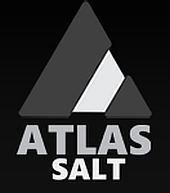 DNI sample tests show Cgr with 67.4% jumbo/large flakes
DNI sample tests show Cgr with 67.4% jumbo/large flakes
67.4% SUPER JUMBO/LARGE FLAKE, INCLUDING 25.3% SUPER JUMBO, AND 29.5% JUMBO FLAKE AT DNI METAL’S MADAGASCAR GRAPHITE PROPERTY
Further to DNI Metals Inc.’s press release dated Sept. 24, 2015, which reported strong graphitic carbon head-grade results (3 per cent to 13.14 per cent Cgr (graphite)) from four trenches covering a strike length of 700 metres, averaging 300 to 400 metres in width, additional testing of these samples has returned the results shown in the table.
Jumbo and Large Flake distribution of greater than 67.4%.
Flake Size Flake DistributionFlakeDescription
%
+30 Mesh / +595 Microns 25.3% Super Jumbo
+50 Mesh / +297 Microns 29.5% Jumbo
+70 Mesh / +210 Microns 12.6% Large
+100 Mesh / +149 Microns9.9% Medium
+140 Mesh / +105 Microns5.8% Small
-140 Mesh / -105 Microns16.9% Small
Total 100.0%
Dan Weir, CEO of DNI commented, “Not only have the samples shown a world-class head grade, but also world-class flake distribution. The team has made it our focus to find High Grade projects that are supported by good infrastructure. The project is 47 Kms from the Madagascar’s main port by paved road and a mere 1.6 kms off the country’s main paved Highway.”
What does 67.4% jumbo/large flake mean? There are only a few known deposits in the world that have flake distribution greater than 60%, one of them is 50kms south of our Madagascar property. Depending on the purity, the larger the flake size, the per tonne value increases.
All representative samples were prepared and collected by or under supervision of DNI’s Country Manager, Steven Goertz. Mr. Goertz is a Geologist and is a Qualified Person under NI43-101 regulations. Mr. Goertz has approved this Press release.
Samples from the four (4) main trenches were blended into one (1) composite representative sample, prior to being reduced via riffle-split to a 1kg sample and tested for flake distribution.
The samples were processed at Process Research Ortech Inc. and Agat Laboratories, both located in Ontario, Canada. Further processing is ongoing to determine particle size distribution and upgrade purity numbers and these results are expected shortly.
Graphitic carbon assays were performed using a modified infrared assay method. This method is preferable to other industry-accepted assay methods including varying forms of Loss on Ignition (LOI) testing.
These results were obtained via conventional flotation only without chemical treatment, i.e. without the use of strong bases (NaOH – caustic roast technique) or acids (H2SO4/HF – acid leach technique).
http://www.dnimetals.com/news1.htm
































